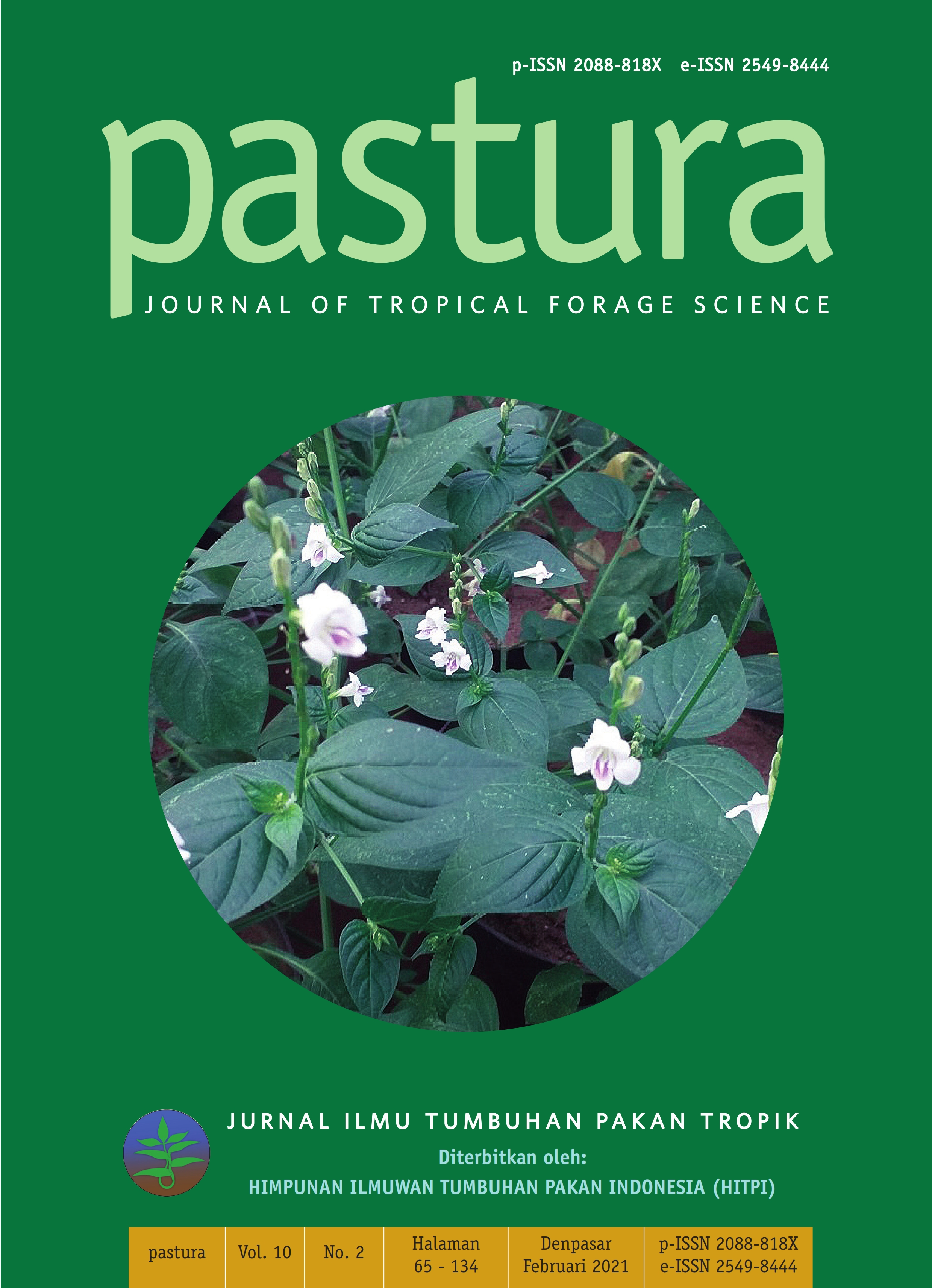POTENTIAL PRODUCTIVITY OF LAMTORO ACCESSIONS AS FORAGES
Abstrak
Lamtoro (Leucaena leucocephala L.) is a fibrous plant for animal feed with young leaves and stems as
edible portions. Every region has their own morphological diversity and potential productivity. The aim of this
study was to determine the potential of lamtoro accessions as a forage based on morphological performance
and weight of edible portion. The experiment was arranged in a randomized block design with three levels
of lamtoro accessions (NTT, Yogyakarta, Serpong) and eight replications. The results showed that lamtoro
accessions significantly affected for plant height, wet weight and dry weight of edible portion. Based on the
performance of plant morphology it showed that the accession of Serpong can be used as forage for feeding
with human assistance, while accessions for NTT and Yogyakarta potential to be forages for grazing.
Keyword: forages, lamtoro accession, potential productivity
##plugins.generic.usageStats.downloads##
Authors who publish with this journal agree to the following terms:
- All articles published by Pastura Journal Of Tropical Forage Science are made available under an open access license worldwide immediately. This means everyone has free and unlimited access to the full-text of all articles published in Pastura Journal Of Tropical Forage Science, and everyone is free to re-use the published material given proper accreditation/citation of the original publication. Open access publication is supported by authors' institutes or research funding agency by payment of a comparatively article processing charge for accepted articles (See Author Fees). Pastura Journal Of Tropical Forage Science publish articles under the Creative Commons Attribution License.
- Authors are able to enter into separate, additional contractual arrangements for the non-exclusive distribution of the journal's published version of the work (e.g., post it to an institutional repository or publish it in a book), with an acknowledgement of its initial publication in this journal.
- Authors are permitted and encouraged to post their work online (e.g., in institutional repositories or on their website) prior to and during the submission process, as it can lead to productive exchanges, as well as earlier and greater citation of published work (SeeThe Effect of Open Access).





